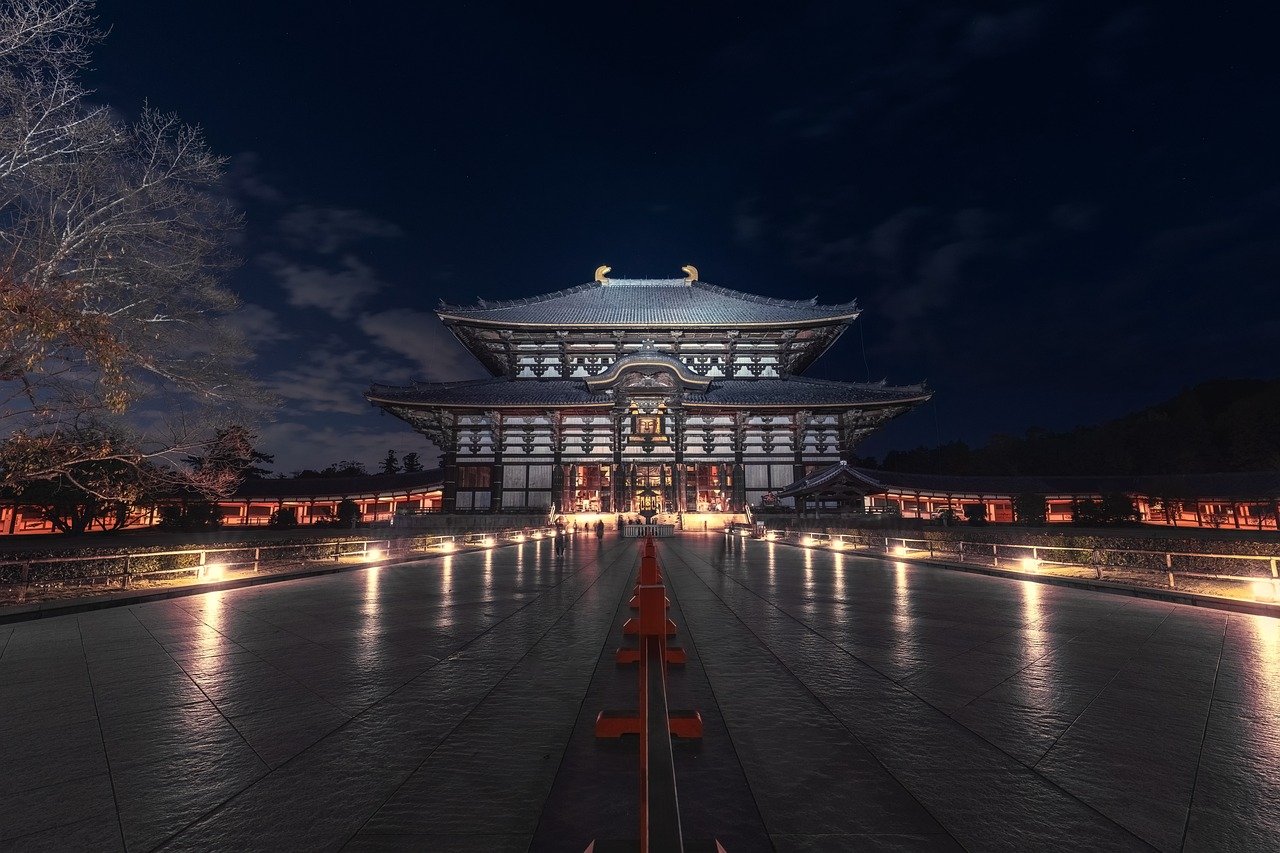Todaiji Temple is one of Japan’s most famous and historically significant temples, serving as a landmark of Nara city. Built in 752 AD, this ancient temple complex not only boasts impressive architectural structures but also houses numerous national treasures, making it an ideal destination to explore Japan’s Buddhist culture and history.
Key Points About Todaiji
- One of Japan’s largest wooden structures
- Home to the world’s largest bronze Buddha statue
- Iconic attraction within Nara Park
- Important symbol of Japanese Buddhist culture
- UNESCO World Heritage Site
Rich Historical Background
Todaiji was constructed in 752 AD as the head temple of all provincial Buddhist temples in Japan. Its influence grew so powerful that the capital was moved away from Nara in 784 to reduce the temple’s impact on government affairs.
Although the current Daibutsuden (Great Buddha Hall) rebuilt in 1692 is only two-thirds of its original size, it held the record as the world’s largest wooden building until recently. This massive structure houses one of Japan’s largest bronze Buddha statues – the Daibutsu (Great Buddha). The seated Buddha, representing Vairocana, stands 15 meters tall and is flanked by two Bodhisattvas.
Daibutsuden: A Majestic Architectural Marvel
The Daibutsuden is Todaiji’s main hall and one of Japan’s largest wooden structures. Though rebuilt in 1692 at two-thirds of its original scale, it remains awe-inspiring.
Inside, the 15-meter tall Daibutsu (Great Buddha) is one of Japan’s largest bronze Buddha statues. Its hand alone is as tall as a human, giving visitors a sense of its immense scale. Two Bodhisattva statues accompany the Great Buddha.
Besides the Daibutsu, the hall displays several smaller Buddhist statues and models of the temple’s former and current buildings. A pillar with a hole at its base, said to be the same size as the Daibutsu’s nostril, is a popular attraction. Legend has it that those who can squeeze through this opening will be granted enlightenment in their next life.
Nandaimon Gate: The Temple’s Imposing Entrance
Along the approach to Todaiji stands the Nandaimon Gate, a large wooden gate. Two fierce-looking statues, representing the Nio Guardian Kings, watch over the gate. These statues, along with the gate itself, are designated national treasures.
Visitors here will also encounter deer from the adjacent Nara Park, often begging for shika senbei – special deer crackers sold for about 200 yen.
Nigatsudo Hall: A Perfect Spot for Nara Panorama
The Nigatsudo Hall is a short walk up the hill east of the Daibutsuden Hall, offering beautiful views of the city from its balcony. This hall is the site of the spectacular Omizutori ceremonies held every March.
The approach to Nigatsudo Hall is a quiet and picturesque street, contrasting with the bustling Daibutsuden area. Stone walls flank the sides, with Nigatsudo visible at the end, making it an ideal spot for a peaceful stroll.
Best Time to Visit
- Spring (March-May): Cherry blossoms in bloom, pleasant weather
- Autumn (October-November): Colorful foliage, comfortable temperatures
- Winter (December-February): Fewer tourists, serene atmosphere
- Avoid Japanese holidays like Golden Week and summer vacation periods
Getting There
Todaiji is located in the northern part of Nara Park. It’s about a 30-minute walk from Kintetsu Nara Station or a 45-minute walk from JR Nara Station. Buses are also available from both stations – get off at “Todaiji Daibutsuden” stop and walk 5-10 minutes.
Opening Hours and Admission
Daibutsuden Hall hours:
- April to October: 7:30 AM – 5:30 PM
- November to March: 8:00 AM – 5:00 PM
- Open year-round
Admission: 800 yen for adults
Visitor Tips
- Wear comfortable shoes for extensive walking
- Bring small change to buy deer crackers
- Respect temple etiquette and maintain silence
- Protect yourself from the sun; bring an umbrella in summer
- Allow at least half a day for your visit
Official Website
Conclusion
Todaiji Temple is more than just an ancient sanctuary; it’s a microcosm of Japanese Buddhist culture. Its imposing architecture, exquisite artworks, and rich history all speak to Japan’s cultural heritage. Whether you’re a history enthusiast, architecture buff, or a traveler seeking to experience traditional Japanese culture, Todaiji is well worth a visit to experience its charm firsthand.
